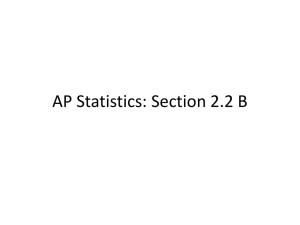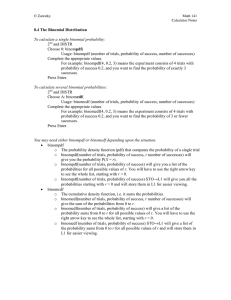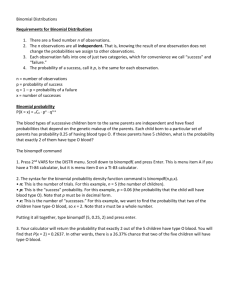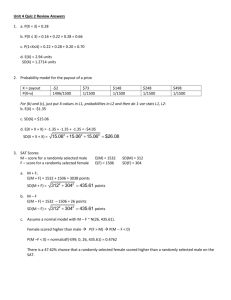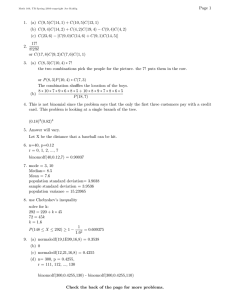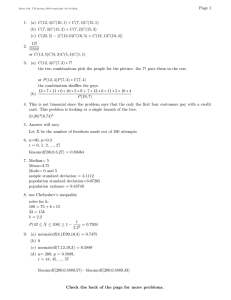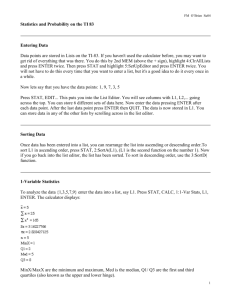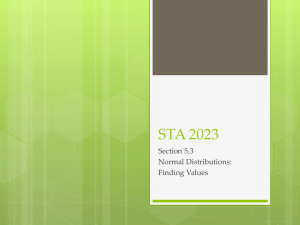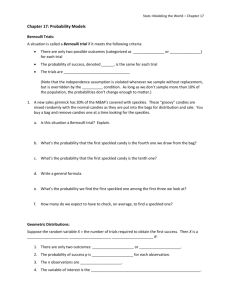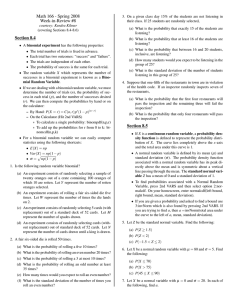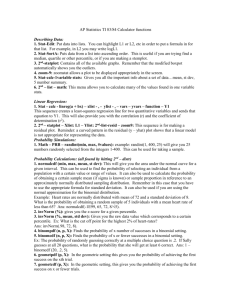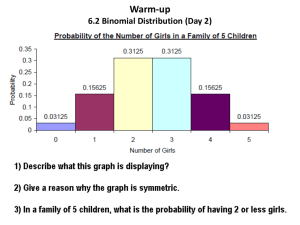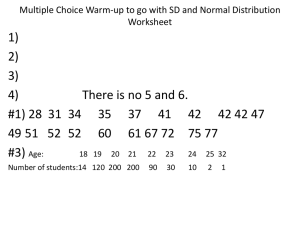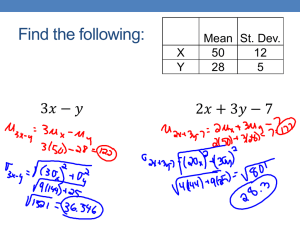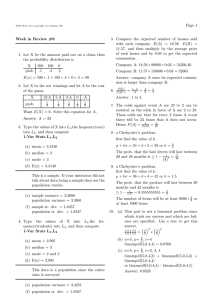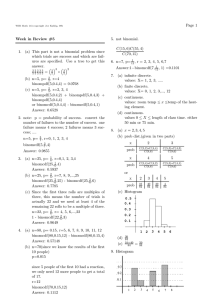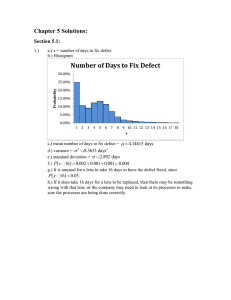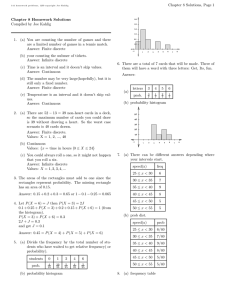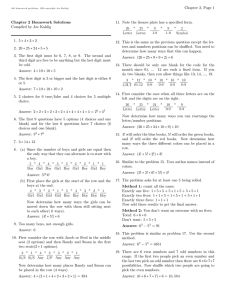normalcdf - TeacherWeb
advertisement
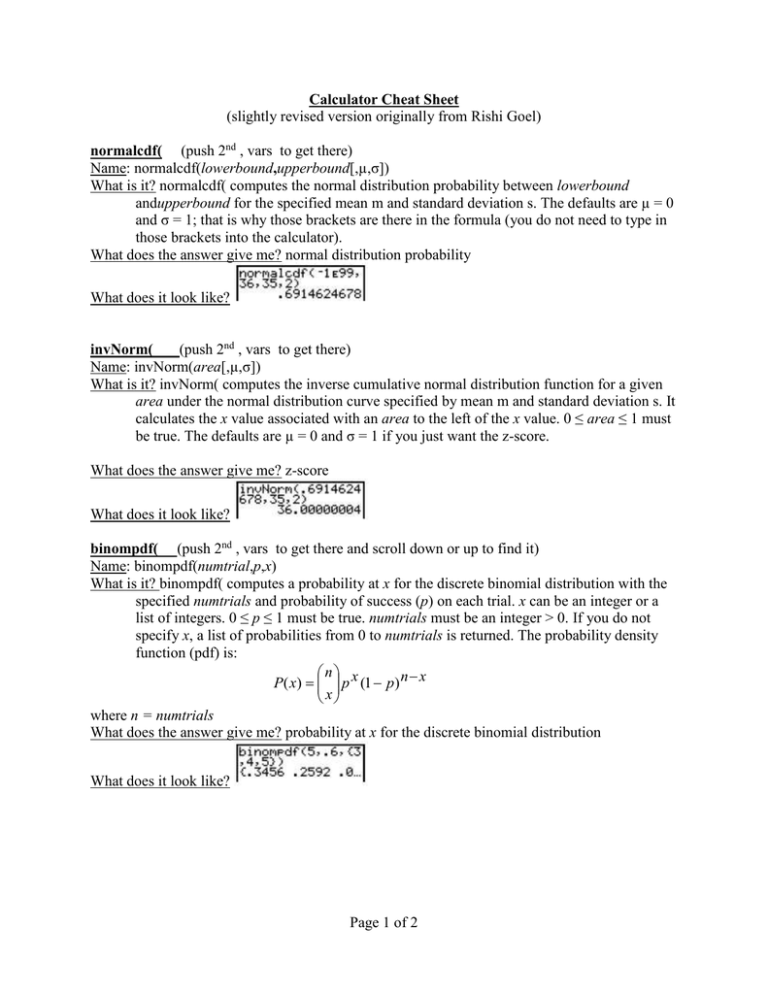
Calculator Cheat Sheet (slightly revised version originally from Rishi Goel) normalcdf( (push 2nd , vars to get there) Name: normalcdf(lowerbound,upperbound[,µ,σ]) What is it? normalcdf( computes the normal distribution probability between lowerbound andupperbound for the specified mean m and standard deviation s. The defaults are µ = 0 and σ = 1; that is why those brackets are there in the formula (you do not need to type in those brackets into the calculator). What does the answer give me? normal distribution probability What does it look like? invNorm( (push 2nd , vars to get there) Name: invNorm(area[,µ,σ]) What is it? invNorm( computes the inverse cumulative normal distribution function for a given area under the normal distribution curve specified by mean m and standard deviation s. It calculates the x value associated with an area to the left of the x value. 0 ≤ area ≤ 1 must be true. The defaults are µ = 0 and σ = 1 if you just want the z-score. What does the answer give me? z-score What does it look like? binompdf( (push 2nd , vars to get there and scroll down or up to find it) Name: binompdf(numtrial,p,x) What is it? binompdf( computes a probability at x for the discrete binomial distribution with the specified numtrials and probability of success (p) on each trial. x can be an integer or a list of integers. 0 ≤ p ≤ 1 must be true. numtrials must be an integer > 0. If you do not specify x, a list of probabilities from 0 to numtrials is returned. The probability density function (pdf) is: n P( x) p x (1 p) n x x where n = numtrials What does the answer give me? probability at x for the discrete binomial distribution What does it look like? Page 1 of 2 binomcdf( (push 2nd , vars to get there and scroll down or up to find it) Name: binomcdf(numtrials,p[,x]) What is it? binomcdf( computes a cumulative probability at x and below for the discrete binomial distribution with the specified numtrials and probability of success (p) on each trial. x can be a real number or a list of real numbers. 0 ≤ p ≤ 1 must be true. numtrials must be an integer > 0. If you do not specify x, a list of cumulative probabilities is returned. What does the answer give me? cumulative probability at x and below for the binomial distribution What does it look like? To turn diagnostics on to get r and r2 in regression: 2nd , 0 , diagnostics on , enter , enter Linreg (push , stat , calc , linreg) List1 and List 2 are the defaults. What does it give me? the linear regression equation, r, and r2 Residual Plot (push 2nd , y= , and put resid in y-list) Important note: You cannot get a residual until AFTER you calculate the linear regression. Then resid can by found by pushing 2nd , stat to get to the list function. The trace button will help you identify particular points. Random number/integer generator (push math , prb , 5(randint ) Then enter the boundaries you wish separated by a comma Compiled Calculator Input Cheat Sheet Statistic Normal Distribution Inverse Normal (to find the z-score) Binomial (discrete) Binomial (cumulative) Calculator Input normalcdf(lowerbound,upperbound[,µ,σ]) invNorm(area[,µ,σ]) binompdf(numtrials,p[,x]) binomcdf(numtrials,p[,x]) Page 2 of 2
